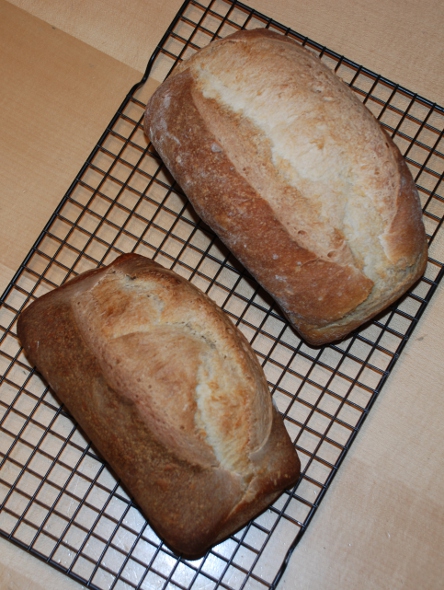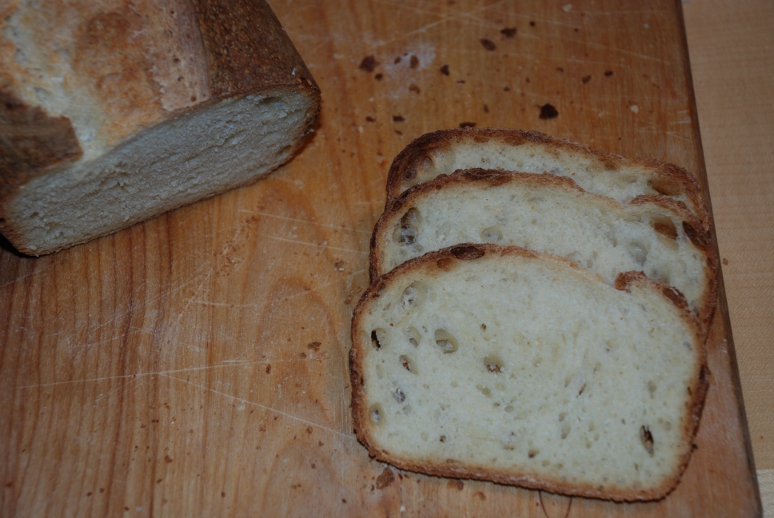
Syd's white sandwich loaf http://www.thefreshloaf.com/node/22464/white-sandwich-loaf has been on my to bake list since it was posted. But those lists are ever growing and time is ever short and I'm ever distractable, so... One of the distractions has been the yeast water craze. As much as I pride myself on being above fashion, the simple fact is I'm not. So when Daisy suggested that an enriched bread might be a good candidate for yeast water, I decided to kill two birds with one stone and try Syd's loaf with yeast water. The problem with converting a recipe before trying it first, is one has (I have) no idea what one is (I am) doing, so I had a failure or three. Then I decided to bake two loaves side by side - one Syd's original formula and the other, his formula converted to yeast water. The loaf pictured in the first four photos is made with Syd's original formula scaled down by 3/4. The only deviation is that I did not use ascorbic acid.



The resulting bread is probably the most feathery light I have ever made. The taste is mild but delicious. Unfortunately the pictures can barely capture the wonderful taste and texture of this bread. My recommendation - if you have any taste at all for white bread, go to Syd's original post and bake it.
For the second loaf, I converted to yeast water by replacing all of the water in the poolish with yeast water and omitting the yeast. I also omitted the yeast from the final dough. Otherwise I followed exactly the same formula, again without the ascorbic acid. After mixing both batches of dough this morning I had to go out for a few hours, so I refrigerated both bowls. When I got back, the yeast version had already doubled, while there appeared to be no change to the yeast water one. I shaped the yeast one and placed in a bread pan to proof, and stretched and folded the yeast water dough and let it bulk ferment on the counter. Before long (I wasn't watching the clock) the yeast loaf had risen an inch above the pan so I baked it, and then shaped and proofed the yeast water loaf. By the time the yeast water loaf was ready to go in, it hadn't even cleared the pan top. But it was softening so I decided to bake it. In the oven it grew to around 80% of the volume of the yeast version.
After tasting the original, I was ready to hate the yeast water version, but surprise, surprise, there was nothing to hate. While the yeast water loaf wasn't as feathery light as the original, and really the taste was completely different, it was every bit as delicious as the first - just a different style of bread. It's hard to come up with exactly the right words, but the yeast water loaf had a tiny bit of a tang, and a more complex flavor in a somewhat denser (not dense, just denser) bread. The picture below is of both loaves (yeast water on the bottom) and below that two shots of the yeast water crumb. I will be hard put to decide which one of these to make next time. Such dilemmas are fun to have. Thank you Syd, for posting your fabulous and delicious formula.


